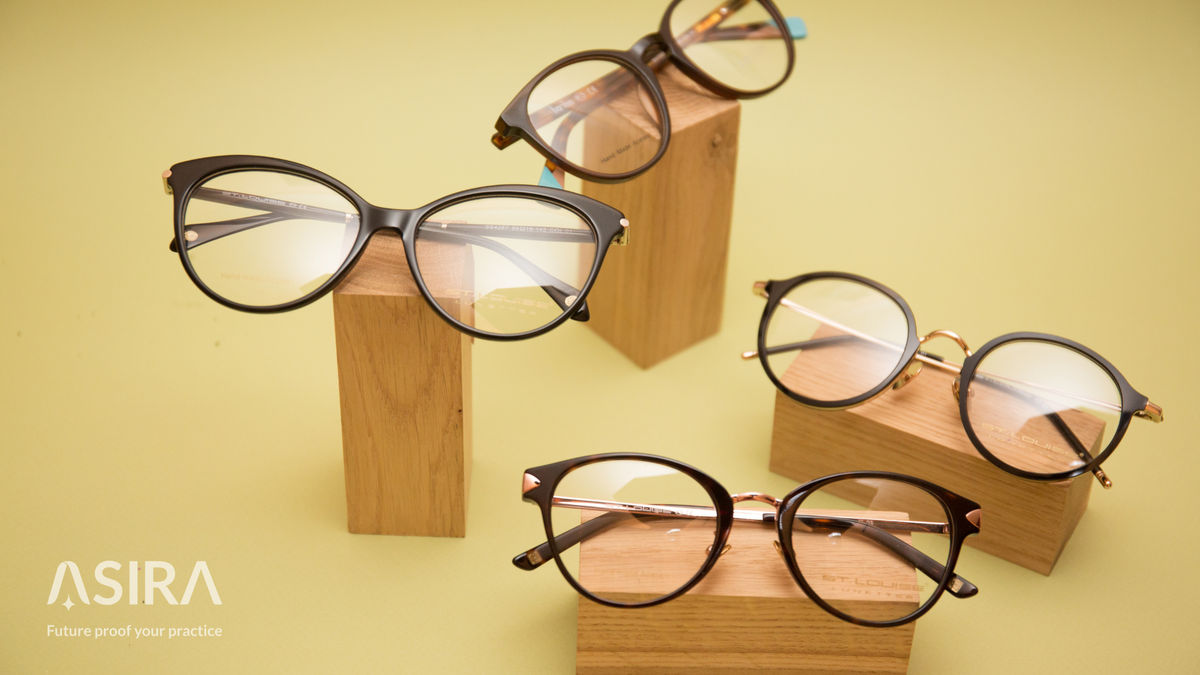The Science and Art of Spectacle Lens Recommendations
Recommending spectacle lenses is both a precise science and a creative art. It requires a deep understanding of optical principles combined with the ability to interpret the diverse needs and lifestyles of patients.

Recommending spectacle lenses is both a precise science and a creative art. It requires a deep understanding of optical principles combined with the ability to interpret the diverse needs and lifestyles of patients. Each patient who walks through the door presents a unique set of challenges and opportunities to enhance their vision. To succeed, eye care professionals must skillfully balance clinical knowledge with a genuine understanding of individual preferences and circumstances.
Understanding the Patient's Lifestyle
A critical first step in the process is getting to know the patient’s lifestyle. Imagine a young professional who spends long hours in front of screens, transitioning from a morning of emails to an afternoon of video conferences and an evening of streaming their favorite show. Their visual needs will differ significantly from those of an outdoor enthusiast who enjoys hiking, fishing, and photography. The professional may benefit greatly from blue-light-blocking lenses or anti-fatigue designs, while the outdoor enthusiast would find polarized lenses invaluable for reducing glare and enhancing clarity under the sun. Understanding these nuances can make the difference between a satisfied patient and one who struggles to adapt to their eyewear.
Matching Lens Types to Vision Needs
Lens type selection forms the foundation of any good recommendation. A child with mild myopia will likely need single-vision lenses, while an older adult experiencing presbyopia might require progressive lenses that provide a seamless transition between distance, intermediate, and near vision. For patients seeking clear distinctions between near and far tasks, bifocal lenses might be a better choice. Then there are specialty lenses, such as prisms for binocular vision issues or aspheric designs for individuals with high refractive errors. The goal is always to match the lens design to the patient’s prescription and specific visual requirements.
The Role of Lens Materials
Material choice is another critical consideration. A patient’s priorities—whether they’re durability, weight, or clarity—will guide this decision. For example, a parent selecting glasses for their active child will likely prioritize impact resistance and opt for polycarbonate or Trivex lenses. Meanwhile, someone with a high prescription might prefer high-index lenses that are thinner and lighter, offering both comfort and aesthetics. Even traditional materials like CR-39, though affordable and optically reliable, may not always be the best choice if durability is a concern.
Choosing the Right Coatings
The next layer of customization involves selecting coatings that enhance lens performance. Anti-reflective (AR) coatings, for instance, reduce glare and are especially helpful for patients who drive at night or spend significant time in front of digital devices. UV protection is a must for safeguarding eye health, particularly for patients who spend a lot of time outdoors. Additional options like scratch-resistant, hydrophobic, and oleophobic coatings further improve durability and convenience, while blue-light-blocking coatings have become increasingly popular for reducing digital eye strain. These enhancements can transform a basic pair of glasses into a truly personalized solution.
Considering Frame Compatibility
Frame compatibility often influences lens recommendations as well. A high prescription can lead to thicker lenses, so choosing smaller frames can help minimize thickness and reduce optical distortions. Rimless or semi-rimless frames require materials like polycarbonate or Trivex, which are lightweight and resistant to chipping. Even fashion-forward frames require consideration, as pairing them with aspheric or high-index lenses can ensure a sleeker, more aesthetically pleasing appearance without compromising on functionality.
Customizing Recommendations
Tailoring recommendations doesn’t end with technical considerations. It’s equally important to engage patients in the process. By asking questions, listening to their concerns, and providing clear explanations, you can make them feel confident in their choices. Visual demonstrations of lens options, such as showing the benefits of an anti-reflective coating under different lighting conditions, can be particularly effective. Cost transparency also plays a role—patients are more likely to invest in quality lenses if they understand the value they’ll receive in terms of durability, comfort, and enhanced vision.
Emphasizing the Value of Quality Lenses
Ultimately, recommending spectacle lenses is about more than just correcting vision; it’s about improving lives. Whether it’s a child seeing the blackboard clearly for the first time or an older adult comfortably reading a book without strain, the right lenses can make a profound difference. By combining optical expertise with a patient-centered approach, you can provide solutions that not only meet visual needs but also deliver an exceptional experience.
Every recommendation is an opportunity to make an impact. With the right blend of science and art, you can ensure your patients leave not just seeing better but feeling understood and cared for.
ASIRA is a simple and secure, cloud-based software tool, built BY optometrists FOR optometrists, that helps eye care professionals reduce the time and effort required to maintain clinical records, schedule appointments, generate bills, manage inventory and much more!
To find out more, visit www.asira.health and sign up for a 30-Day FREE TRIAL! If you're a new practice owner or a fresh graduate thinking of entrepreneurship, visit www.asira.health/optompreneur to learn how ASIRA can help reduce your costs and increase revenue.




